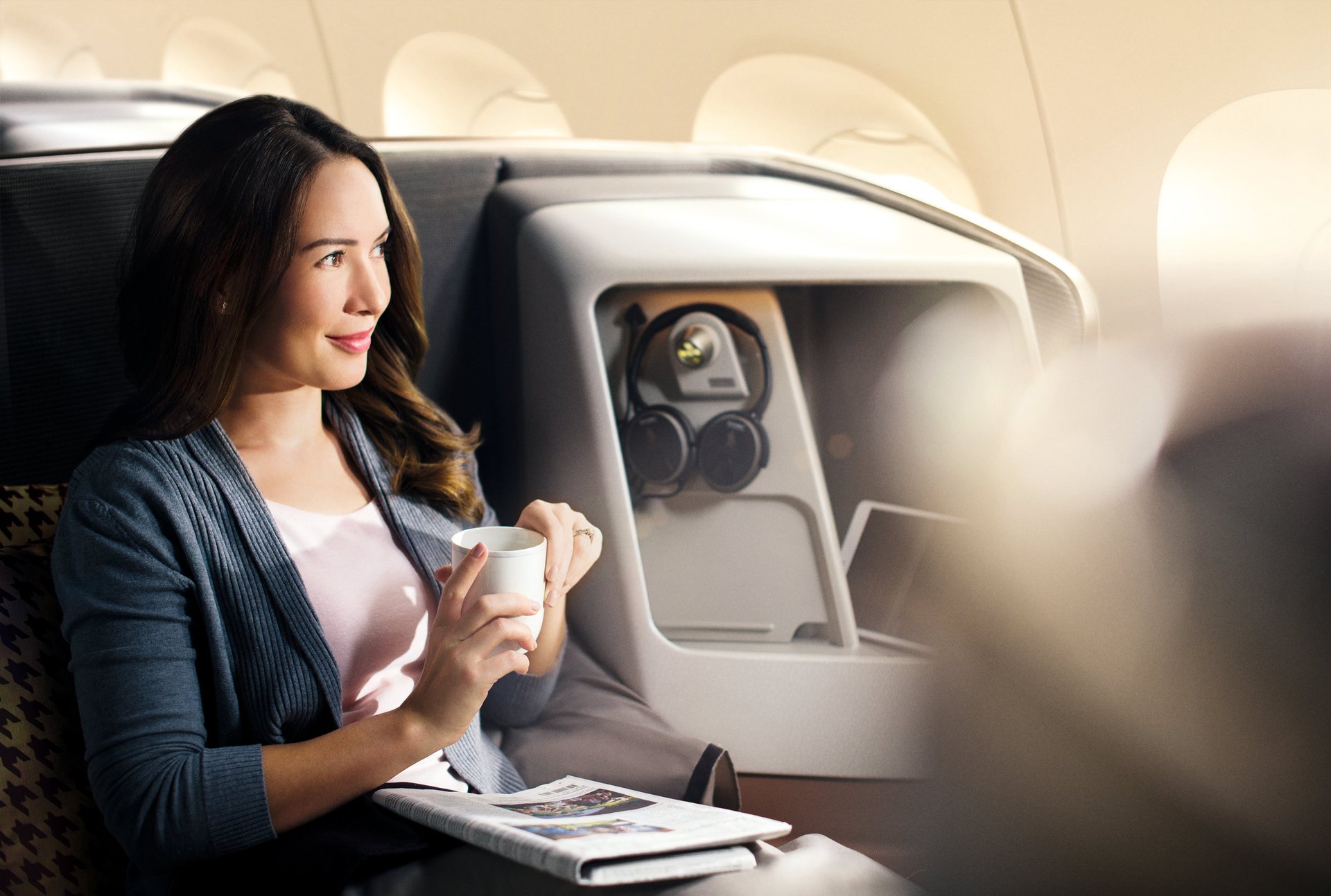With mood lighting and fresh air, Singapore Airlines is helping ward off jet lag
More people than ever are hitting the open road, stepping outside the confines of their home country and traveling abroad. According to the National Travel and Tourism Office, the number of Americans traveling internationally grew by 8% in 2016. But what the data also reveals is that, even though more people are traveling abroad, most opt for destinations closer to home. Part of this has to do with the trepidation over multiple hours in the air.


More people than ever are hitting the open road, stepping outside the confines of their home country and traveling abroad. According to the National Travel and Tourism Office, the number of Americans traveling internationally grew by 8% in 2016. But what the data also reveals is that, even though more people are traveling abroad, most opt for destinations closer to home. Part of this has to do with the trepidation over multiple hours in the air.
That’s because long-haul travel experiences can feel daunting. But what if long flights didn’t have to be difficult or uncomfortable? Singapore Airlines, one of the world’s most experienced long-haul carriers, is building the industry’s largest fleet of what many pilots are hailing as the most technologically advanced airliner in the skies. Designed and built by Airbus, it’s engineered from the inside out to address almost every pain point you can think of when it comes to flights that can comfortably take you to the other side of the planet without making a stop in between.
Paul Edwards is Airbus’ head of design and brand management and is responsible for the fleet’s new Airspace cabins. His definition of comfort incorporates both the visible and invisible. “Comfort is influenced by things you can see, whether that’s space or light, but it’s also heavily influenced by things you can’t see—such as noise or air circulation.”
According to Edwards, lighting is one of the most underestimated ways you can create comfort on board an aircraft. With potentially the most powerful mood-lighting system in the sky, there are an impressive 16.7 million programmable color options in the cabin’s LED light system. “If each one of those colors was a pencil, you’d have enough pencils to stretch all the way from Singapore to Hong Kong,” says Edwards. In this way, Singapore Airlines’ inflight crews can change the lighting to fit the mood and help combat jet lag: bright light for boarding, relaxed lighting during dining, and even a scenario that replicates a soothing sunset to help passengers drift off to sleep.

Cabin pressure and altitude, too, add to the feeling of disorientation that fliers can sometimes experience over the course of many hours in the sky. With the Airspace cabin on the Airbus A350, however, Singapore Airlines is equipped to refresh the cabin with new air every two minutes. This, coupled with the hospital-grade HEPA filters, means passengers get almost 15% more fresh air compared to other aircraft. Cabin altitude in the aircraft can also feel as low as 6,000 feet at maximum cruising altitude and dedicated software within the cabin gradually regulates the rate of altitude change, making it virtually unnoticeable. Ultimately, this means that passengers don’t feel the distressing effects of altitude like lightheadedness and ear popping.
Even if you’re blissfully unaware of the air circulation, the design of the A350 XWB’s sleek cabin can make a long flight seem not only tolerable, but downright appealing. With ergonomically designed seats, high ceilings, and large windows, traveling to a far-flung locale doesn’t seem nearly as unnerving. Rather than the flight being a means to an end, it can instead become the first relaxing part of your journey.
Singapore Airlines already uses its Airbus A350 XWB for its non-stop flight from San Francisco to Singapore and its direct flight from Houston to Singapore via Manchester. Now, there are plans to announce two even longer non-stop flights from New York and Los Angeles to Singapore on a variant of this aircraft. These will be among the world’s longest non-stop flights. By dispelling the conception that long-distance travel is bound to be unpleasant, Singapore Airlines offers a new model of comfort that’s sure to make international travel even more enticing than it is already.
This article was produced on behalf of Singapore Airlines by Quartz Creative and not by the Quartz editorial staff.